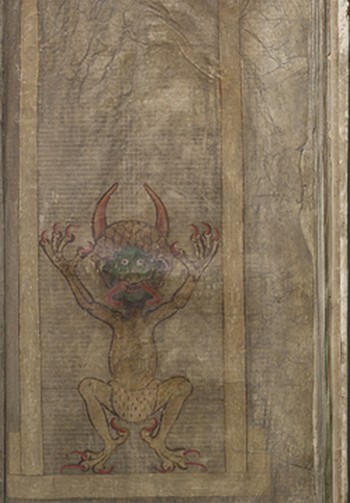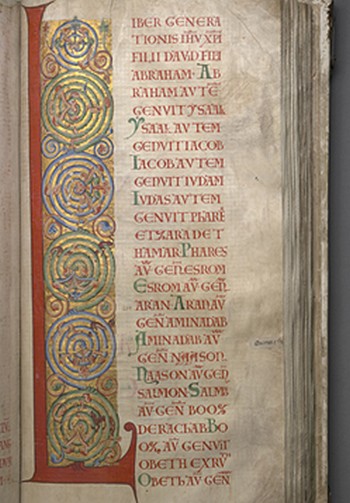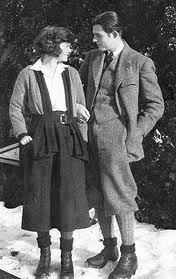The author, Donatien Alphonse François, went to his grave believing his magnum opus had been destroyed. He wept “tears of blood” over its loss.
The author was wrong. However, over one hundred years would pass by before what some have called “one of the most important novels ever written” would see the light of print.
The author himself was a little more modest, calling it merely: “the most impure tale ever written since the world began.”
The most impure tale has a history unique among lost manuscripts of being hidden, lost, stolen, sold and confiscated.
The most impure tale is, of course, 120 Days of Sodom.
The Marquis de Sade wrote his controversial work in 1785 on a scroll made from bits of parchment joined end to end. At the time — the last days of the ancien regime — he was imprisoned in a cell in the Liberty Tower of the Bastille. The resulting manuscript is 39 feet (11.9 metres) long, just a few inches wide, and inscribed on both sides with thousands of tiny handwritten words so small that you need a magnifying glass to read them.
The Marquis hid the scroll between bricks in the wall of his cell. No wonder he hid it. The sensibilities of the time would scarcely have been welcoming of the tale. Four rich men rent a castle in the wilderness for the express purpose of abducting a bunch of teenagers and subjecting them to four months of torture, rape and bestiality. Not all of them survive the four months of what would later be called, after the name of the author, sadism.
He wasn’t good with his timings, Donatien Alphonse François. On 2 July 1789, the Marquis used some metal pipe as a megaphone through his cell window to cause a riot. He shouted that the prisoners were being murdered and urged the citizens of Paris to burn down the Bastille.
In a panic, the authorities transferred the rabble-rousing Marquis to the lunatic asylum at Charenton. They hustled him off without a chance to retrieve his manuscript.
He therefore ordered the preternaturally patient Madame de Sade to retrieve it for him.
Unfortunately, however, the Marquise didn’t have time to complete her assignment as, on 14 July 1789, the mob got round to following the Marquis’ instructions and stormed the Bastille. This was the beginning of the French revolution and of the Marquis’ tears of blood. (Or, to be more precise: his “larmes de sang“.)
The Marquis believed his manuscript had been lost to the rioters. In fact, a young revolutionary named Arnoux de Saint-Maximin discovered the scroll, spirited it out of the dissolving prison, and enterprisingly sold it to the Marquis de Villeneuve-Trans.
For reasons best known to themselves, this particular Marquis’ descendants sat on the manuscript in their estate in Provence for more than a century.
Eventually, they woke up and, again, for reasons best known to themselves, in 1900 sold it to a German aficionado. In 1904, the buyer, the Berlin sex-pert Iwan Bloch published a few hundred copies of the Marquis’ previously unknown novel, purportedly for scientific reasons.
In 1929, the scroll returned from Germany to France, when Charles and Marie-Laure de Noailles (who traced their ancestry to the Marquis de Sade) purchased it. In 1982, their daughter, Nathalie (for reasons best known, etc) lent the manuscript to a friend, the publisher Jean Grouet.
Rather than do anything like, say, publishing it, the publisher smuggled the manuscript into Switzerland. There, he sold it for around $60,000 to a department-store dynamo, Gérard Nordmann.
After legal battles that went on for years, France ruled in 1990 that the manuscript had been stolen and ordered Nordmann to return it to the Noailles. Switzerland disagreed. In 1998, the Swiss federal court ruled that Nordmann had purchased the manuscript in good faith. So, in Switzerland the manuscript stayed.
In March 2014, Gérard Lheritier, founder of Aristophil, a firm specialising in rare manuscripts, bought the scroll of The 120 Days of Sodom from Nordmann’s son, Serge, for seven million euros.
A share of the seven million euros went to the Nordmann family, the legal owners of the scroll, another share to Nathalie de Noailles’ heir. Without that agreement, the French authorities would have seized the manuscript the minute it crossed the French border. They, as you will remember, legally considered that the manuscript should never have crossed the border the other way in the first place.
Aristophil, however, went bankrupt in 2015, after Gérard Lhéritier was accused of fraud.
Aristophil’s assets would be gradually liquidated, and all their historic documents sold off. Aguttes, the Parisian auction company that was storing the company’s holdings, announced that the sale would start in December 2017, with a blockbuster auction, including The 120 Days of Sodom.
The day before the auction, the French government announced that the Marquis de Sade’s 120 Days of Sodom was a national treasure; a “trésor national“.
This meant that the manuscript could not be taken out of the country for at least 30 months, and gave the state the time to find the resources to buy it.
In July 2021, the Ministry of Culture announced that the Marquis de Sade manuscript had been acquired for the French nation for €4.55m.
The manuscript will spend the rest of its days peacefully in the Arsenal library in Paris, a branch of the Bibliothèque Nationale de France.
In just over 200 years, the Marquis de Sade has gone from a prisoner of the French state to national treasure. I think even the Marquis would have been surprised by that.
So might his son, the equally splendidly named Donatien Claude Armand, who, after inheriting the title on his father’s death, burned most of his father’s literary work. Those are the real de Sade lost manuscripts, as we will never be able to read them.
Perhaps, given their likely subject matter, it’s just as well.






